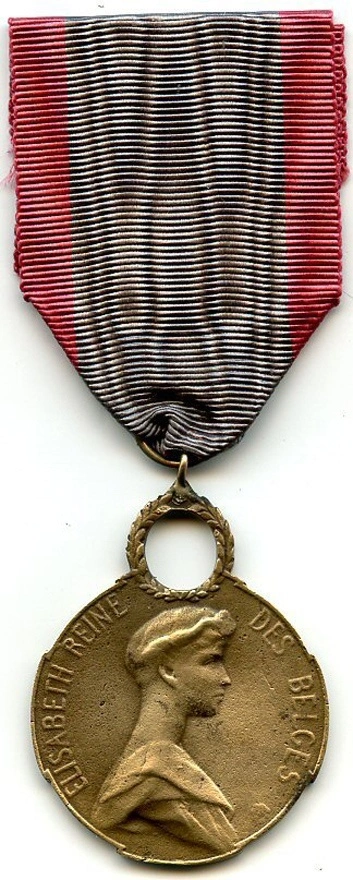Women's Social and Political Union medal for valour
A DigitalNZ Story by National Library Services to Schools
Frances Parker was a New Zealander living in Britain who became a prominent suffrage activist. She became a leader of the WSPU in Scotland and was involved in violent protests and attempts to burn down buildings.
These resources and text relate to a medal awarded to Frances Parker by the Women's Social and Political Union (WSPU.) A New Zealander Parker became a prominent suffragette activist for female emancipation in Britain. Resources have been sourced and collated from DigitalNZ and other websites.
Women's Social and Political Union Medal for Valour
Museum of New Zealand Te Papa Tongarewa
Background
Frances Parker - A New Zealand Suffragette in Britain
The medal, which is in its original inscribed case, was 'Presented to Frances Parker by the Women's Social and Political Union (WSPU) in Recognition of a Gallant Action, whereby through Endurance to the last Extremity of Hunger and Hardship, a Great Principle of Political Justice was Vindicated'.
Frances Parker was a New Zealander living in Britain who became a prominent Suffrage activist. She had left New Zealand to study at Cambridge in 1896, when she was aged 22 and her suffrage activism may have been motivated by the fact that New Zealand women had had voting rights since 1893. She became a leader of the WSPU in Scotland and was involved in violent protests and attempts to burn down prominent buildings. In February 1914 Parker was arrested for attempting to set fire to the cottage of Robert Burns, Scotland's national poet.
The terminology of the medal's inscriptions explicitly evokes the suffrage struggle as a military campaign and the inscriptions liken the suffragists' valour to the bravery expected of soldiers on active service.
This medal is a powerful memento of the ongoing struggle of women around the world for civic rights and is especially significant for New Zealand as a tangible link to our engagement in that struggle.
Source: Te Papa: https://collections.tepapa.govt.nz/object/1523371. Accessed 01/08/2018
Kate Sheppard on the $10 note
Manatū Taonga, the Ministry for Culture and Heritage
Context
Unlike in New Zealand, the British suffrage movement’s struggle to get the vote was lengthy and at times dramatic and violent. Many suffrage activists were arrested and imprisoned.
Once imprisoned some activists refused to eat as a way to call attention to their political cause. In return the government carried out degrading and brutal attempts to feed these hunger strikers. Called forcible-feeding it involved holding the imprisoned suffragette down while a doctor fed her liquids through a rubber tube.
The medal is a testament to these actions and was awarded to Parker while she was imprisoned. The obverse is engraved with the words 'Hunger Strike', and the reverse features the following inscriptions: 'Fed by Force 4/3/12', 'Fed by Force 8/7/14'.
“We are fighting for a revolution!’ wrote Christabel Pankhurst in 1913. British suffragettes smashed windows, heckled public speakers, burned down houses, churches and pavilions, defaced artworks and cut telephone wires. Winston Churchill was even attacked with a horse whip by a suffragette.
Fertile questions
How was the movement to win voting rights (suffrage) like a battle?
What are medals for?
What is conflict good for?
He aha te tikanga o te tuku mētara?
What is your question?
Women wearing medals on Anzac day.
New Zealand Recreation: Anzac Day
Museum of New Zealand Te Papa Tongarewa
THE WOMEN'S WAR (Grey River Argus, 15 May 1913)
National Library of New Zealand
Lady voters going up to polling-booth, election day, Auckland
Auckland Libraries
Quick facts
- Parker came from a well-off background and was a niece of Field-Marshal Lord Kitchener who paid for her education at Newnham College Cambridge. Her famous uncle declared himself "disgusted" by her involvement in the women's movement.
- The Women’s Social and Political Union (WSPU), was founded by Emmeline Pankhurst in 1903. It was a militant part of the British women's suffrage movement and its campaign took the fight for women's votes directly to the Establishment.
- Parker was sentenced to four months in Holloway Prison in March 1912 after taking part in a WSPU-organised window-smashing raid.
- In prison, Parker went on a hunger strike and was subject to force-feeding which involved acts of extreme violence and indecencies. Her health collapsed and she was released to a nursing home, from which she escaped.
- During the war, Parker served in the Women's Army Auxiliary Corps and was awarded an OBE.
THREE BOMBS (Evening Post, 15 May 1913)
National Library of New Zealand
'Hero Medal' brooch
Museum of New Zealand Te Papa Tongarewa
Medal with ribbon
Museum of New Zealand Te Papa Tongarewa
Other resources
Cat and mouse — force-feeding the suffragettes.
Cat and mouse — the story of 4 Scottish suffragettes imprisoned in Perth prison.
Frances Parker — how Frances Parker fought for women's suffrage in Britain and women's marches today.
Marking Suffrage Day — remembering Frances Parker.
Meet the Suffragettes — the original media-disruptors.
The Suffragettes— pictures of the British suffragettes in colour.
Who was Frances Parker?— discover more about suffragette Frances Parker .
Why do medals make people happy?— medals and honours don't make people richer, but they do make them happier
Queen Elisabeth Medal
Manatū Taonga, the Ministry for Culture and Heritage
FORCIBLE FEEDING. (Colonist, 16 May 1913)
National Library of New Zealand
This story was compiled and curated by Te Puna Mātauranga o Aotearoa | National Library of New Zealand, Services to Schools staff, in 2019.


